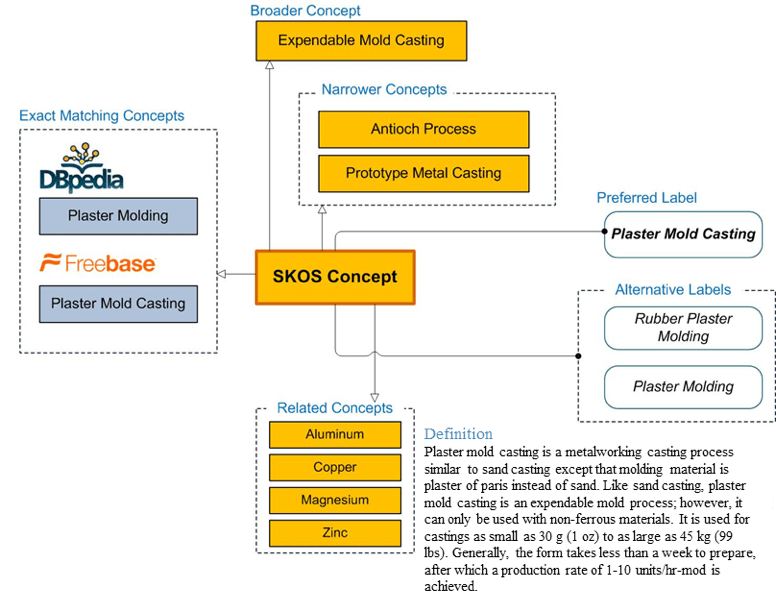ManuTerms is a formal thesaurus for manufacturing cocnepts. Its first version was published in May 2013. ManuTerms was originally developed with the objective of collecting the key concepts used in manufacturing capability representations. ManuTerms is composed of 16 concept schemes, namely, General Term, Facility, Feature, Hardware, Industry, Material, Metric, Model, Phenomenon, Process Input, Process, Product, Production, Service, Software, and Supply. Currently, ManuTerms contains more than 2000 manufacturing concepts.
ManuTerms is modeled using SKOS syntax and semantics. SKOS (Simple Knowledge Organization System) provides a model for expressing the basic structure and content of concept schemes such as thesauri, classification schemes, subject heading lists, taxonomies, folksonomies, and other types of controlled vocabulary. SKOS is built upon the Resource Description Framework (RDF) and RDF Schema (RDFS) and enables publication of controlled vocabularies on the Semantic Web as an RDF graph. SKOS thesauri are concept-based, as opposed to term-based. In a term-based thesaurus, terms are directly connected together by the means of semantic relationships. However, in a concept-based thesaurus, semantic connection is at a concept level. In SKOS formalism, terms are the lexical labels for the concepts. An advantage of a concept-based thesaurus is that it allows conceptualization to be performed at the semantic level. A SKOS thesaurus, like any other concept-based thesaurus, has a three-level structure: (a) conceptual level, where concepts are identified and their hierarchical and associative interrelationships established; (b) terminological correspondence level, where terms or labels (preferred or alternative) are associated to their respective concepts; and (c) lexical level where lexical relationships are defined to interconnect the terms.

